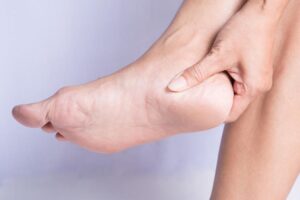Category: Health
Oct 23, 2024 Health
The Natural Origins of Kratom – The Nature’s Answer to Pain Management
Its leaves contain compounds known as alkaloids, primarily mitragynine and 7-hydroxymitragynine, which interact with the body’s opioid receptors to produce effects similar to those of prescription pain medications, albeit with a distinct profile. This interaction offers a dual benefit – at lower doses, kratom can act as a stimulant, promoting increased energy and focus, while at higher doses, it tends to produce sedative effects, providing relief from pain and anxiety. This unique duality is one of the reasons many people are turning to kratom as a potential solution for managing chronic pain conditions, such as arthritis, fibromyalgia, and lower back pain. For those who have experienced debilitating pain, the quest for effective relief can be daunting. Traditional pain medications often come with a slew of side effects and the risk of dependence or addiction. In contrast, many users of kratom report a more manageable side effect profile. They cite fewer instances of gastrointestinal upset, sedation, and cognitive impairment compared to opioids and other pharmaceuticals.

Moreover, the natural origins of kratom appeal to those looking for holistic or herbal remedies, aligning with a growing trend towards natural health solutions. Advocates claim that kratom not only alleviates pain but can also enhance mood and improve overall well-being, which can be particularly beneficial for those dealing with the psychological impacts of chronic pain. The substance is largely unregulated in many countries, leading to concerns about purity, quality, and the potential for misuse. Critics argue that while some individuals may find relief from kratom, the lack of standardization in dosing and quality control can lead to dangerous variations in effects. Additionally, the long-term effects of kratom use are still not well understood, raising concerns among healthcare professionals regarding its safety and efficacy. Despite the controversies, the anecdotal evidence surrounding kratom’s effectiveness in pain management continues to grow. Numerous online forums and testimonials highlight personal stories of individuals who have successfully integrated kratom into their pain management routines.
These accounts often describe a significant reduction in pain levels, improved mobility, and a return to daily activities that chronic pain previously hindered. For many, kratom guide represents not just a means of alleviating pain but a pathway to reclaiming control over their lives and well-being. Research into kratom is ongoing, and while the scientific community is still assessing its potential benefits and risks, many are hopeful that it can be incorporated into a broader conversation about pain management alternatives. As more people seek natural alternatives to conventional pharmaceuticals, kratom’s reputation as nature’s answer to pain management may gain further traction. Ultimately, the decision to use kratom for pain relief should be made with caution and ideally in consultation with a healthcare professional, especially for those already managing other health conditions or medications. Whether as a complementary therapy or a primary pain management strategy, kratom continues to intrigue those searching for effective, natural solutions in the ongoing battle against pain.
Sep 13, 2024 Health
Plantar Fasciitis Recovery – How Long Does It Take?
Plantar fasciitis is a common and often painful condition that affects the plantar fascia, a thick band of tissue running along the bottom of the foot. It is responsible for supporting the arch and absorbing shock when walking or standing. When this tissue becomes inflamed due to overuse or strain, it can lead to significant discomfort, particularly in the heel area. Recovery from plantar fasciitis can vary significantly depending on the severity of the condition and the treatment approach, but understanding the timeline for healing is essential for managing expectations and ensuring proper care. The time it takes to recover from plantar fasciitis largely depends on several factors. These include the length of time someone has had the condition, the intensity of the pain, their overall health, and how diligently they follow treatment protocols. Acute cases, where the condition has developed recently and has not caused significant damage, typically heal faster than chronic cases, which may have persisted for months or even years.

Age also plays a role. Older individuals often experience slower healing due to decreased blood flow and tissue repair capabilities. Additionally, people who are overweight or have jobs that require long periods of standing or walking may experience prolonged recovery times since the plantar fascia is constantly being strained. In general, most people can expect to recover from plantar fasciitis within 6 to 12 months with conservative treatment. For mild cases, symptoms may improve in as little as a few weeks, especially if the individual reduces their activity levels and adheres to a treatment plan early on. More moderate cases typically resolve within 3 to 6 months, though this may require consistent physical therapy, stretching exercises, and modifications to footwear. In such cases, more intensive treatments such as corticosteroid injections, orthotic devices, or even surgery may be necessary. It is important to note that plantar fasciitis does not resolve quickly, and attempting to return to high-impact activities too soon can result in setbacks and prolong the healing process.
Recovery from plantar fasciitis is often a multi-faceted process that includes a combination of rest, stretching, and strengthening exercises, alongside other interventions aimed at reducing inflammation and pain and read this article history of plantar fasciitis. Reducing activities that put excessive strain on the foot, such as running, prolonged standing, or walking on hard surfaces, is crucial. Rest allows the plantar fascia to heal without additional stress. Specific stretches for the calf muscles and the plantar fascia can improve flexibility and reduce tension in the affected area. Strengthening exercises targeting the muscles of the foot and lower leg also help support the arch and prevent future strain. Wearing supportive shoes with proper arch support can reduce pressure on the plantar fascia. In more severe cases, corticosteroid injections may provide temporary relief from pain and inflammation. Many individuals benefit from working with a physical therapist, who can design a tailored exercise program to strengthen the foot, improve flexibility, and address any underlying issues, such as improper gait or imbalances that contribute to the condition.